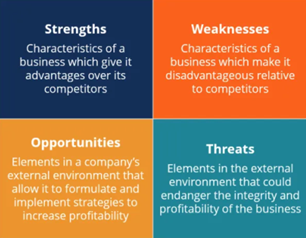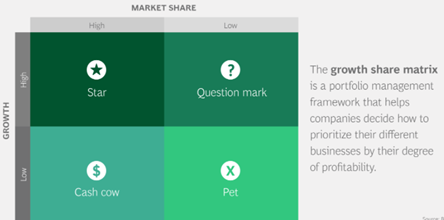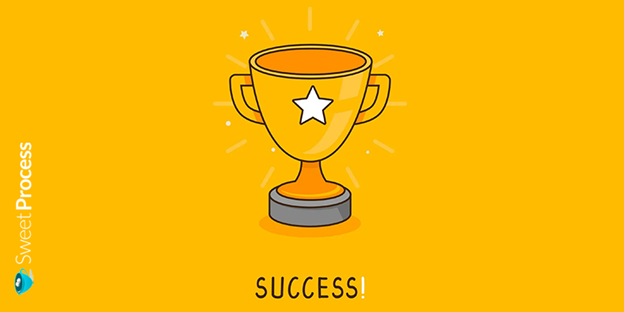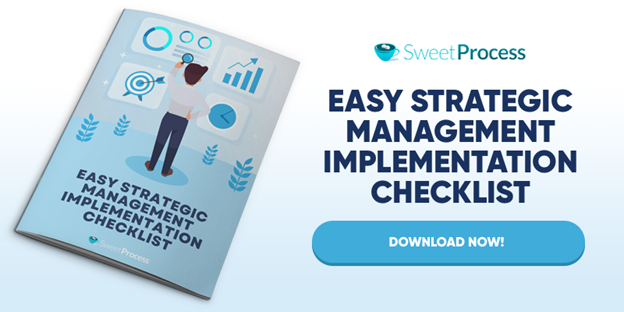Last Updated on October 30, 2024 by Owen McGab Enaohwo

You run a small business and have been yearning to pursue new opportunities. Unfortunately, you don’t have a coherent strategy or road map to follow.
Without a clear vision or business objectives, proper communication, harnessing company efforts and resources, or even running daily operations can be a challenge. And so is determining company direction or gaining a competitive advantage. Ultimately, without a plan, your company cannot grow, let alone thrive.
What your company requires is a set of guidelines to achieve business goals and propel your business forward. Simply put, the solution is proper strategic management.
This article will provide you with a detailed guide to effective strategic management.
Strategic Management – Full Guide Chapter Index
Chapter 1: What is Strategic Management?
Chapter 2: Benefits of Strategic Management
Chapter 3: Strategic Management Stages
Chapter 4: Types and Frameworks of Strategic Management Strategies
Chapter 5: Strategic Management Example
Chapter 7: Characteristics of Successful Companies
Chapter 10: Frequently Asked Questions
Chapter 11: Enhance Your Strategic Management Process With SweetProcess
Conclusion: Take Your Organization to the Next Level With Proper Strategic Management
Chapter 1: What is Strategic Management?

Strategic management refers to how an organization manages its resources to achieve its objectives. It is the continuous process of planning, analyzing, monitoring, and evaluating all the necessary items, decisions, and activities an organization requires to attain its goals successfully.
The business environment is dynamic. Changing market conditions and technologies mean organizations need to assess their current situation, analyze the competitive environment, set goals and objectives, and formulate strategies based on available resources. What follows next is implementing the strategies and measuring their effectiveness.
Effective strategic management entails short-term and long-term planning for both the predictable and the unexpected. It streamlines business functions to work together harmoniously and forms an integral part of an organization’s business. As such, strategic management applies to both small and large enterprises.
Here is a video explaining what strategic management is all about:
The History of Strategic Management
Strategic management dates back to the 1950s and 1960s, though the discipline draws inspiration from texts on war and political strategies written thousands of years earlier.
Notable contributors to the discipline include Peter Drucker, Alfred Chandler, and Philip Selznick. Many companies relied on their teachings to create and implement strategic plans in the 1960s.
Back then, the focus was on achieving profitability by creating high-quality technical products (production orientation). However, the customer soon became the motivation behind all major strategic business decisions.
In the 1960s and the 1970s, companies used strategic planning to enhance employee effectiveness, with General Electric creating strategic business units (SBUs). The 1980s and 1990s witnessed the shift to improving efficiency while the new millennium ushered in organizational innovation. Currently, the focus is on flexible and leaner organizational structures.
Chapter 2: Benefits of Strategic Management

The benefits of strategic management are far-reaching, covering both financial and non-financial aspects of the business. While the chief benefit is to help businesses devise better strategies by leveraging a more systematic approach to strategic choice, strategic management accomplishes the following.
Builds Competitive Advantage
Engaging in strategic management helps you understand the competition better in terms of their strengths, weaknesses, and strategies. It also raises awareness about emerging trends, external threats, and opportunities. This helps you develop a unique selling proposition, thereby building your competitive advantage.
Acts as the Reference Point for Major Business Decisions
The strategic management process establishes a company’s vision, mission, and objectives. It also identifies opportunities and threats, and determines the best way to leverage strengths and alleviate weaknesses. Therefore, it sets the framework and defines clear boundaries for making key business decisions. This aids faster decision-making.
Strategic management also creates a framework where employees can get involved in making day-to-day operational decisions. This helps them understand how their contributions move the business forward.
But more than that, it encourages forward-thinking by enabling senior managers and the board to focus more on the organization’s future rather than day-to-day activities. In other words, they focus their efforts on activities that best promote the company’s success.
Enhances Sustainable Growth
Because strategic management allows companies to identify, prioritize, and exploit opportunities, it helps promote sustainable growth. It also allows for a more efficient allocation of resources, including time, to the identified opportunities.
Furthermore, through identifying and maximizing a firm’s core competencies and competitive advantage, the strategic management process helps ensure the company’s survival plus future growth.
Makes Businesses Proactive Instead of Reactive
Strategic management allows an organization to envision its future and helps it to prepare accordingly by taking the necessary precautions to avoid unfavorable scenarios. By being proactive, an organization is able to keep up with constantly changing market trends and keep ahead of the competition.
While you might have no control over some occurrences, such as a change in the business environment, taking a proactive approach gives your business a better chance of survival.
Increases Managerial Awareness
When senior management gets involved in developing and implementing the strategic management process, it increases their awareness of the process. This makes it easier for them to support proposed plans since they understand the associated benefits.
Also, when managers consistently look into the company’s future, they will heighten their awareness of industry trends and challenges. Implementing strategic thinking and planning makes them well-prepared to deal with future challenges.
Prepares an Organization for Potential Challenges
Being aware of potential threats facing your company and industry at large puts you in a better position to prepare for challenges. It enables you to prevent possible problems by anticipating them, identifying the most appropriate ways to overcome them, and making contingency plans. At the same time, it allows the business to explore opportunities to pursue.
A detailed SWOT analysis can also help you address current weaknesses that contribute to future challenges by taking relevant action. For instance, adding distribution channels could help prevent late product deliveries. This type of analysis provides a means of exploring and identifying an organization’s internal and external factors that play a role in determining current business operations and future potential. The framework also helps in formulating strategic goals.
Makes it Easier to Achieve Goals
Strategic management is vital in helping a company accomplish its business goals. It makes goals attainable by providing a clear and systematic process for formulating workable steps plus their implementation.
Company goals could cover anything from building a competitive edge to enhancing brand awareness or increasing sales. With a dedicated strategic plan, your business can obtain invaluable insights on market trends, competitor activity, and product offerings that could impact your success.
By using these insights, your business can employ targeted marketing efforts to improve profitability and overall market share.
Creates a More Cohesive Organization
Involving the entire organization—from management to employees at all levels—in developing a strategic management plan helps create a more cohesive organization. It also boosts a company’s problem-solving capabilities by promoting interactions between managers and staff at all functional levels.
Shared organizational objectives and recognizing worker contributions are key to staff empowerment. Ensuring that everybody contributes helps foster ownership, reduces resistance to change, and makes staff more committed to carrying out their responsibilities toward meeting organizational goals.
In summary, strategic management provides organizations with a sense of discipline and formality in the management of their business. By providing a structured framework for enhanced coordination of business activities and clarifying individual responsibilities, it provides a cohesive, integrated, and energized approach to solving problems and exploiting opportunities.
Chapter 3: Strategic Management Stages

In undertaking the strategic management process, managers do more than follow a set of rules. Instead, they think strategically then apply their thinking to the process. To achieve the best outcomes, it’s advisable to implement this process when everybody in the company knows and understands the strategy.
Business managers and academicians have formulated numerous frameworks to guide the strategic management process. While the right framework depends on factors like your current situation, the organization’s culture, leadership style, competition, and your industry, this process generally includes the following five key phases.
1. Identifying and Setting Goals
Goal-setting aims at clarifying the vision you have for your business which makes this a crucial stage in the strategic management process. The goals need to be detailed, realistic, and aligned with the company’s vision. This stage entails the following steps:
- Defining short- and long-term objectives.
- Determining how to accomplish your business objectives.
- Customizing the process for your employees by assigning each person a specific task.
- Developing a mission statement that communicates the company’s goals to both staff and shareholders.
The last step involves informing the staff about the organization’s goals and objectives and the people tasked with implementing each task that helps realize the set goals.
2. Analyzing
Here, you gather as much relevant data and information as possible to help attain your vision. This stage is essential since the information gathered here shapes the following two stages. The focus is on understanding the business’ needs, its strategic direction, and identifying initiatives to support business growth.
Additionally, you will need to carry out a SWOT analysis. This entails establishing any external or internal factors that could impact your goals and objectives, identifying your company’s strengths, weaknesses, opportunities, and potential threats.
3. Formulation
When formulating a strategy, the first thing to do is review information obtained from the analysis. Establish the resources at hand that can help your business accomplish its goals and objectives, and identify what areas the business needs to source for external resources.
Next, prioritize the issues facing your business according to their level of importance, then start formulating your strategy. Given the dynamism of business and economic situations, ensure to develop alternative approaches for each step of the plan.
4. Execution
The success of any business venture depends on successful strategy implementation. Unfortunately, successful implementation does not happen for over 60% of the strategies undertaken. Among the primary reasons for this are failure to:
- Communicate the strategy
- Develop systems and structure
- Align individual duties with performance objectives
- Initiate risk management strategies
- Reward performance
Execution spells out the action stage in the strategic management process. Note that if the proposed strategy cannot work with the current business structure, it’s best to install a new structure as you commence this stage.
At this point, the employees ought to be clear on their duties and responsibilities and understand how that integrates with the overall company goal. In addition, you need to secure any resources necessary to carry out this venture at this juncture. Once you have secured financing and everyone is ready, it’s time to roll out the plan.
5. Evaluation and Control
A successful strategy evaluation starts with determining what parameters need to be measured. These parameters need to tie in with the goals set during the first stage. You can then establish your progress by measuring the actual results against the strategic plan.
This stage entails strategy evaluation and control activities, such as:
- Performance measurements.
- Constant reviews of internal and external challenges.
- Taking corrective measures where necessary.
Tracking internal and external problems is crucial because it enables you to react to any significant changes in the business environment. Take corrective action if you determine that the strategy is not propelling the business toward its defined objectives. Ultimately, if the corrective measures are ineffective in ensuring success, consider repeating the entire strategic management process.
Evaluation and control is an ongoing process. It offers an organization the opportunity to decide whether a change in direction is necessary. Hence, businesses need to review their strategy periodically to determine what’s working and what needs amendments.
Ultimately, all the above steps are essential in the successful development and implementation of a strategic management plan.
Chapter 4: Types and Frameworks of Strategic Management Strategies

Strategic frameworks lend structure to your strategy. They are tools that help shape business thinking, guide organizational growth, and assist companies in achieving their goals. The frameworks are also useful in analyzing business problems and formulating strategies.
That said, strategic management frameworks are numerous and range from simple to pretty complicated. Choosing an ideal framework for your business can thus be an enormous challenge. The best way to select one is by considering your type of organization, goals, strengths, and weaknesses.
Below is a list of some of the strategic frameworks available for businesses.
SWOT Analysis
SWOT stands for strengths, weaknesses, opportunities, and threats. The framework is useful in assessing a company’s internal strengths and weaknesses, exploring external opportunities available for exploitation, and confronting threats presented by business rivals or policies.
Simply put, it spells out the internal, external, and any other factors that could impact a company’s goals. Managers use a SWOT analysis to find out whether their firm’s resources and capabilities are effective within their competitive environment. They also use it to revise their strategies in order to remain successful.
Balanced Scorecard
The balanced scorecard is a model for measuring strategic performance that aims at translating a company’s vision and mission into operational actions. It turns strategic goals into performance objectives that can be measured, monitored, and altered when need be to meet strategic goals.
This management system looks at an organization’s performance through four main facets:
- Financial analysis: Includes goals geared toward improving the bottom line, and features metrics like return on investment (ROI), operating income, and sales growth.
- Internal analysis: Examines how business processes link to the firm’s strategic goals.
- Customer analysis: Looks at customer satisfaction and customer retention.
- Learning and growth analysis: Entails staff training and retention, and using knowledge to sustain a competitive edge.
By using this method, organizations can generate timely reports showing all statistics associated with company growth.
Experience Curve
The experience curve concept proposes that the more experienced a firm is in producing a given product, the lower its production cost. And when the total output doubles, the value-added costs such as marketing, manufacturing, and distribution lessen by a constant percentage.
The implication here is that a company that is able to gain market share over the competition can gain a cost advantage.
Competitive Advantage
Value Chain
Value chain relates to the combination of internal activities a company engages in to generate goods and services, from receiving materials to delivery to the market. As a strategic tool, value chain analysis analyzes a company’s internal activities, enabling a business to evaluate its activities while exploring competitive opportunities.
It seeks to identify the most valuable activities (i.e., they offer differentiation or cost advantage) and those that the firm can improve on to achieve competitive advantage.
Core Competence
A company’s core competence is the bundle of skills that makes it unique. An organization can provide a unique product, service, or perspective by developing expertise in one area of excellence and outsourcing or eliminating the rest of its business activities. The given service or product is typically difficult for the competition to imitate, thus providing a competitive advantage.
Inter-Organizational Relationships
Inter-organizational relationships refer to the relationships that occur between and amongst organizations. These relationships are essential as they aid in getting necessary resources, enhancing organizational legitimacy, minimizing uncertainty, and accomplishing inter-organizational goals and objectives. They are a way of combining assets from two separate entities to create greater value.
The relationships may occur between public, private, or non-profit organizations. They may involve relations among a few or more organizations in the same geographical location or large international networks.
Inter-organizational relationships are crucial for firms and their strategies, and a common approach organizes these relationships into competition, cooperation, and co-opetition (a mix of both cooperation and competition).
Theory of the Business
A company’s theory of business is a term that refers to the assumptions an organization was built on and are used to run the business but don’t fit the current reality. The assumptions shape organizational behavior decisions on what to do or not and define what the firm counts as meaningful results.
A theory of the business comprises three key parts. Assumptions about:
- The firm’s environment—the market, customers, and technology.
- The organization’s mission.
- Core competencies required to achieve the mission and maintain leadership.
Attaining a clear, harmonious, and sound theory of business takes years of thought, tireless efforts, and experimenting to achieve. Still, any business looking to succeed needs to come up with one.
To prevent the theory of business from becoming obsolete, you need to integrate routine monitoring and testing into the company. Also, rethink a stagnating theory whose assumptions regarding the organization’s mission, environment, and core competencies might no longer reflect current reality.
For instance, in the 1950s, AT&T achieved its mission by providing phone access to all American homes and businesses. However, the company failed to re-examine its theory of business and failed to consider future endeavors like long-distance service or moving into global telecommunications.
After some years, the business floundered. The lesson here is that attaining company goals ought to provide an opportunity for new thinking, lack of which might lead to problems.
Thus, you need to take effective action to change organizational behavior to suit the new environment. This action entails a new mission and developing new core competencies.
Generic Competitive Strategies
According to Michael Porter, a renowned business strategist, a company that fails to focus on a single factor risks putting its resources to waste. He recommends a strategy that lays emphasis on product or service differentiation by creating a unique selling proposition (USP) or economies of scale to attain low production costs.
Corporate Strategy and Portfolio Theory
Corporate strategy encompasses all decisions relating to resource allocation within an organization’s business units, plus nurturing the business portfolio in a manner that helps achieve corporate objectives. It considers all the firm’s businesses in determining the best way to create the most value.
Portfolio theory offers a resource allocation framework that allows optimization of the expected return for a certain level of risk. The theory allows organizations to conduct a cost-benefit analysis on resource deployment, thereby realizing the benefits of individual resources to the company.It also determines risk tolerance levels while providing an opportunity to uncover ways to diversify a company’s offerings.
Many organizations rely on the growth-share matrix to analyze the value of their individual business units. The matrix helps companies determine how to prioritize various businesses by assigning each to a particular category. Then managers select where to focus their resources to realize the most value, plus where to mitigate their losses.
Chapter 5: Strategic Management Example

Below is an example of how strategic management works:
1. Identification
Look Divine, a cosmetic products company, plans to launch a new line of skincare products. The company decides to follow the strategic management process to make sure that the product launch is successful and consistent across their outlets in the country.
2. Analysis
The company is facing dwindling sales plus high competition and is looking to change its marketing strategy to win more customers and gain more market share. For starters, they
decide to carry out a SWOT analysis to determine how they can improve their marketing.
| Strengths: Wide range of products High-quality products Great customer service | Weaknesses: Low sales Few staff trained in cosmetology Poor marketing strategy |
| Threats: Increased competition Counterfeit products | Opportunities: New skincare range Home deliveries |
3. Formulation
Look Divine uses results from the SWOT analysis to create a strategic plan for the launch of the skincare range. The plan includes leveraging social media, customer testimonials, and positive word of mouth. It also entails specialized training for a representative from each outlet and running in-store promotions to raise brand visibility.
4. Execution
The execution runs as follows:
- Two months before the launch, the company runs digital campaigns on all its social channels promoting product awareness.
- Satisfied customers are encouraged to spread the word and post positive reviews on social media.
- Each outlet sends a representative for the special training on skincare two weeks before the launch.
- The company teams up with a courier company.
- During the launch, the company uses influential media personalities and models.
- The social media campaign continues throughout the week of the launch and for a week after for sustenance.
5. Evaluation
Look Divine reviewed data from their social media channels during and after the launch. There was heightened activity during the campaign period and booming sales. The home deliveries were a hit, and sales continued even after the launch, with the staff becoming more confident in offering advice. The management plans to continue running periodic digital campaigns and introduce additional products.
Chapter 6: Strategic Planning

This is an analytical approach that refers to formal procedures employed in generating data and analyses used in strategic thinking. The procedure synthesizes this data, leading to the strategy.
Upon determining the strategy, strategic planning can also be used to allude to control mechanisms used in its implementation. Therefore, strategic planning typically occurs around the process of strategy formation and entails the following:
- Analyzing the environment. This is an analysis of a firm’s internal and external environment. The internal environment relates to company strengths, weaknesses, and the personal values of strategy implementers, whereas external factors relate to industry threats, opportunities, and societal expectations. PEST analysis is an example of an analytical framework that can be applied here.
- Scenario planning. Since it’s difficult to predict strategic outcomes accurately, companies can use scenario planning to develop multiple outcomes, assess their implications, and evaluate their likelihood of occurrence.
- Measuring and controlling implementation. After determining the strategy, the organization can now decide on the goals and measures to chart its course, evaluate performance, and control strategy implementation. A useful tool here is the balanced scorecard.
- Evaluation. This is vital as you need to assess whether strategic priorities were achieved. Yet some firms overlook this stage. You can use responsive evaluation, a method that offers a natural and humane perspective to program evaluation. Going beyond the goal-oriented evaluation style, it takes into account the program’s history, circumstances, as well as stakeholder undertakings.
Chapter 7: Characteristics of Successful Companies
Different companies have different ways of measuring success. But generally, successful companies boast certain traits that are universally considered typical of thriving businesses. Great companies often have core values that nurture and sustain the enterprise while encouraging employee participation in company growth.
Some of the key traits observed in companies that prosper over many years include the following:
- Sensitive to the business environment: They are able to learn and adjust.
- Cohesion and identity: This entails building a community that has vision, purpose, and personality.
- Decentralization and tolerance: They are able to build lasting relationships.
- Conservative financing.
Companies that exhibit such traits are known as living companies since they can perpetuate themselves. They place more emphasis on knowledge as opposed to finances, viewing themselves as evolving human communities. This gives them the capacity to grow into prosperous businesses that last for decades.
Organizations looking to be successful should ponder the following:
- Whether the proposed competitive advantage will generate perceived differential value (PDV). PDV is the difference between what an item actually costs and what it’s perceived to be worth. Leveraging the difference can generate a disproportionate return.
- Whether the competitive advantage will produce something that differs from the competition.
- Whether potential customers will perceive the difference as a value add. This involves discussing the overall effect of product features, price, and consumer perceptions.
- Whether the product will add any value to the company. This calls for an investigation into cost-effectiveness as well as the pricing strategy.
Chapter 8: Strategic Themes

Strategic themes are the primary high-level strategies that form the basis for the firm’s business model. Also known as pillars of excellence, they’re broad in scope because they apply to the entire organization and define the key business objectives the organization will pursue to accomplish its vision.
In simple words, strategic themes are areas in which your business must excel to achieve its vision. The themes also influence the strategic directional decisions arrived at by management. Organizations often feature similar themes with the difference seen in the strategic result; thus, the results guide organizational transformation.
Several strategic approaches have come up over time. These include the change from product to marketing-driven demand, higher use of self-service methods of lowering costs, and changes in corporate structure resulting from globalization and the internet.
Let’s have a brief look at each.
Self-Service
A key theme in strategic competition, self-service, is a trend that’s typically facilitated by technology. The customer assumes a role previously done by an employee, thereby lowering company costs and, at times, prices. For instance, self-service at gas pumps, online banking, or using ATMs for cash.
Globalization
This is the integration of economies as a result of technology and innovation in the supply chain process. The value chain for a certain company’s product might not be held within one firm since multiple entities making up a virtual firm can now meet the customer’s needs. Examples include outsourcing production to third parties while retaining sales and design functions.
Online Information Availability
Thanks to the internet, consumers are now more empowered while buyers and sellers can meet amidst plummeting transaction costs. This creates more robust marketplaces for buying and selling goods and services like online auction sites and dating services. Also, services formerly offered by single entities now have third-party providers, while shifts in viewing habits brought by on-demand content have led to fragmented audiences.
Sustainability
This is the ability to successfully sustain a business within dynamic economic, social, health, and environmental circumstances and has emerged as a vital component of strategic development.
Incorporating sustainability into core business strategy (embedded sustainability) without a trade-off in quality or price provides seven distinct opportunities to create business value and competitive advantage, namely:
- Better risk management.
- Better product differentiation.
- New market entrances.
- Improved efficiency by reducing waste plus use of resources.
- Enhanced brand and social approval.
- Greater chance to impact industry standards.
- Higher opportunity for radical innovation.
Additionally, according to research, innovation led by resource depletion can bring about essential competitive advantages for a company and its products when correct innovation principles are applied.
Also, asset managers who integrate embedded sustainability in their capital allocation produce stronger ROIs than managers who fail to integrate sustainability strategically into similar business models.
Chapter 9: Traps to Avoid

Strategic planning and management are complex processes. While they provide a framework for generating solutions and addressing issues, they do not guarantee success or a solution to all organizational problems.
That aside, when implemented correctly, a well-thought-out strategic plan can transform your business into new heights. However, several traps can lead to your strategy’s failure. While it’s possible to avoid most of them, you need to be aware of them so that you can take adequate measures and stay clear of them.
Some of the most common traps you need to look out for include the following:
- Using strategic planning and management only to satisfy regulatory and accreditation requirements instead of adding value to the organization and its processes.
- Not having the support of top managers owing to organizational politics.
- Getting to solutions quickly without properly analyzing complex problems.
- Relying on intuition so much that your business avoids the series of thorough and well-thought-out plans that are needed.
- Struggling with execution due to delegation of planning to a “planner” instead of the actual managers.
- Being too rigid and not using the creative, flexible, and out-of-the-box thinking required in the current business environment.
- Managers getting bogged down by internal problems, thus focusing more on firefighting such that strategic planning and management cannot work.
The above list is by no means exhaustive since aspects like too much bureaucracy and not following a plan can also lead to failure. Organizations looking to succeed today and in the future require agility and flexibility, yet should be malleable enough to survive changing market conditions.
Again, their core structure needs to be in line with core competencies, while a combination of formal and informal planning is necessary for fruitful strategic management.
Learn how to avert the most common pitfalls, and your strategy implementation will be off to a good start.
Chapter 10: Frequently Asked Questions
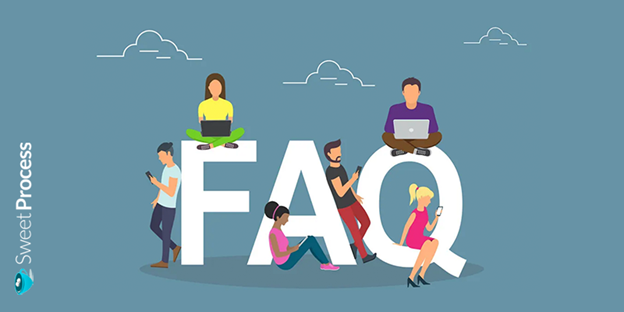
Here are the most frequently asked questions regarding strategic management:
What is Strategic Management?
Strategic management is a philosophical approach to running a business. The term refers to the process through which managers formulate and carry out an operational strategy that accords the business with a competitive edge. The management utilizes data analytics for strategic thinking, then uses the strategic management process to execute the ideas.
What Are the Main Benefits of Strategic Management?
The main benefits of strategic management are:
- It boosts sustainable growth.
- It raises managerial awareness.
- It makes it easier to achieve business goals.
- It forms a reference point for business decisions.
- It makes the organization more cohesive.
- It builds a competitive advantage.
- It makes your businesses proactive rather than reactive.
- It prepares the organization for possible challenges.
What Are the Five Stages of Strategic Management?
Here are the five stages of strategic management:
- Identifying and setting goals.
- Analyzing both internal and external strong and weak points.
- Formulating action plans.
- Implementing the plans.
- Evaluating effectiveness.
What is an Example of Strategic Management?
Here is an example of a company that has employed strategic management successfully:
Amazon is the largest online retailer. Amazon’s business strategy is driven by the desire to gain a competitive edge through cost leadership and innovation in competitive markets. The company’s key focus is serving the needs of its end customers, and its key strengths are great customer service and speedy shipping.
The company’s vision is to be the world’s most customer-centric business, and it realizes this through continuous innovation in both new and existing markets. The results are increased growth and greater value to its shareholders.
The tech giant’s operational and marketing strategies also focus on price, choice, and economies of scale, all geared toward creating value for customers. This strategic framework has enabled Amazon to grow into one of the most profitable tech companies.
How Can Strategic Management Be Made Sustainable?
Strategic management can be made sustainable by ensuring that a company’s business strategy positively impacts the environment and society by helping to address some of the most pressing issues.
This approach adopts strategies that not only meet the current needs of the entity plus stakeholders but also protect, enhance, and sustain the human and natural resources required for future use.
Chapter 11: Enhance Your Strategic Management Process With SweetProcess

If you have been thinking of enhancing your company’s strategic management process but are unsure what program to use, worry no more. SweetProcess can help you. This invaluable tool can take the stress out of formulating and implementing your strategic management plan. For more details on what exactly SweetProcess is capable of, read the below case studies.
MiPA Demonstrates How to Scale Up With Streamlined Business Processes
Emma Mills owns MiPA, UK’s award-winning premier choice for call services and virtual personal assistant support. Emma has a passion for helping entrepreneurs focus on business growth and, together with her superb team, manages communication between business owners and their clients.
As her business expanded, Emma soon realized she required a more efficient workflow program to manage her operations. Handling the repetitive tasks called for effective organization, allowing the business owners to spend time on other enjoyable activities.
The challenge with handling the communication needs of numerous businesses was that things could easily be left undone. Emma needed proper documentation.
“We dabbled with Dropbox [ …] but it quickly became apparent that […] we needed something that was gonna take part of the management out of it for us,” said Emma.
She also wanted to offer more personalized customer service but working with the current system proved to be a challenge. Luckily, SweetProcess solved all these issues by:
- Enabling Emma to provide customized service.
- Helping to streamline and improve business processes.
- Facilitating seamless staff onboarding and training.
TechQuarters Conquers Tribal Knowledge With Effective Business Processes and Procedures
Chris Dunning, the CEO at TechQuarters, and Mark O’Dell, the operations director, help small- and medium-sized enterprises leverage cloud solutions to address their IT needs. Boasting 10 years’ experience, the two leaders are exceptionally good at organizing, transferring, offering support and training their clients upon migrating their IT services online.
However, with increased growth, tribal knowledge (undocumented company knowledge about how things work) was harming their business. New employers needed to learn business procedures, and the process got repeated with every new employee. Also, manually documenting all processes and procedures was unsustainable.
The challenge for the leaders is that they needed to have all processes centralized in a system accessible to all staff. Thankfully, SweetProcess turned out to be the right tool, and the results were instantaneous.
As Mark and Chris noted, “This new person hasn’t worked for that customer before. So how do we get it inside their head? And the answer is […] you get it inside a system that doesn’t have to be inside their head. So when that new person becomes another ten new people, they just follow the same process.”
The workflow software helped streamline their operations, enhancing workers’ efficiency in serving more clients. It also enabled effective documentation, increased customer satisfaction, and provided a centralized knowledge base.
ShipCalm Resolves Growth Pains by Streamlining Its Business Processes
ShipCalm, a logistics company, provides fulfillment services through an omnichannel and ships directly to retailers and consumers. The e-commerce–focused firm had developed strong partnerships with renowned e-commerce companies like Amazon and Shopify, leveraging its network to offer excellent delivery services.
Ted Fogliani, the CEO and process-driven leader, desired to streamline business operations at ShipCalm but lacked an effective tool. Unfortunately, his employees’ efficiency suffered since they lacked adequate knowledge to execute tasks. His search for the right solution led him to SweetProcess.
SweetProcess did not disappoint, solving his problems in one fell swoop. The workflow system promoted business growth and employee efficiency by creating an environment that empowered his employees and satisfied his clients.
“I had been hunting for years for something that was easy to do, and the thing that got me attracted to SweetProcess was that writing revision one of the procedures is the easiest thing in the market. I’ve looked at them all,” reports Ted.
What about you? Are you ready to try out SweetProcess to see what it can do for your business? You have nothing to lose and lots to gain. Sign up for the SweetProcess free trial and get firsthand experience. No credit card required!
Conclusion: Take Your Organization to the Next Level With Proper Strategic Management
If you are looking to take your business to the next level, you need to start on the right footing. Proper strategic management is crucial to business success, helping your company survive and thrive in an uncertain market.
SweetProcess can help you streamline your business processes, ensuring your company runs smoothly and competitively. It can also help you document your strategic plan and keep it easily accessible. Join the free trial and discover the SweetProcess difference. Remember, no credit card required!
Don’t leave without downloading the FREE Easy Strategic Management Implementation Checklist below!
